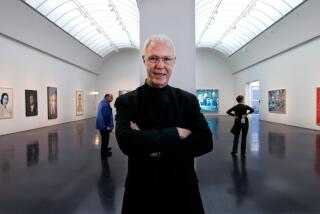Skeptics and Boosters Await San Diego’s Soviet Arts Festival
They said it couldn’t be done. Some said it shouldn’t be done. But Saturday, San Diego opens “Treasures of the Soviet Union,” a three-week arts festival that organizers hope will put the city on the cultural map.
The San Diego Arts Festival is largely the brainchild of Mayor Maureen O’Connor, who dreamed up the event while in Scotland for the 1987 Edinburgh Festival.
Though organized by a nonprofit corporation, the festival is clearly a city-sponsored event. The officers of the corporation are O’Connor, the city manager, the city attorney and the city auditor. City tax dollars provided almost one-half of the $6.25-million budget.
The festival is designed to be a triennial event and the 1992 fest will likely be tied to the quincentennial celebration of the discovery of the New World. The mayor plans to step down as president after this year’s festival, saying she will leave future festival planning “to the professionals.”
Therein lies the rub for many of the festival’s detractors. O’Connor has personally made many of the artistic choices, traveling to the Soviet Union in June of 1988 and continuing to have a major hand in all aspects of the festival’s planning, even after artistic coordinator Bruce Joseph was hired in December.
One of the early criticisms of the festival was that it would be “thrown together” because of the short lead time. The 1987 Los Angeles Festival had three years planning. The 1990 Goodwill Games Arts Festival in Seattle, which also will feature a Soviet theme, is working on four years planning.
The San Diego festival had 18 months of planning, not much longer than the lead time for another Soviet-American collaboration--the 1988 Making Music Together Festival in Boston, which had some artistic success, but was a logistics nightmare.
One telling result of the short lead time was the absence on the program of any Russian ballet, arguably the Soviet Union’s greatest cultural export. All the major companies had already booked tours that didn’t coincide with the San Diego festival dates.
Also providing fodder for skeptics was the mayor’s boosterish attitude toward the festival. “For once, San Diego has won!” she exclaimed upon her return from the Soviet Union, adding the city had beaten “Seattle, the Smithsonian and New York.”
But except for an unsuccessful attempt to keep independent promoters from presenting events not sanctioned by the festival, the mayor has had her way.
Artistically, the festival has a little bit of everything: glitz (Faberge eggs); old art (religious icons and folk art); new art (contemporary photography and the world premiere of a play); heavy (a Mussorgsky opera and an epic stage production about dreary rural life after World War II), and light (marionettes and folk dance). There will be a huge, free, daylong celebration--titled “Super Powers Sunday”--at Balboa Park on Oct. 22.
Just as there is “official” and “unofficial” art in the Soviet Union, there are similar designations for festival events.
The mayor did her best to prevent two independent promoters from presenting Soviet acts that weren’t part of the festival. She invoked a verbal agreement with the Soviet Ministry of Culture that supposedly gave festival organizers authority to approve all Soviet acts in the city during the festival.
Her efforts ultimately failed, but she did provide this classic piece of irony: The San Diego Soviet Arts Festival, made possible in part by the new Russian openness, was accused of using the heavy-handed tactics once associated with the old Soviet system. Thus, in the spirit of perestroika, there are some “unofficial” or “Fringe” events. For information on the festival schedule, call (800) 245-FEST.
See festival highlights on Page 48.
More to Read
The biggest entertainment stories
Get our big stories about Hollywood, film, television, music, arts, culture and more right in your inbox as soon as they publish.
You may occasionally receive promotional content from the Los Angeles Times.










